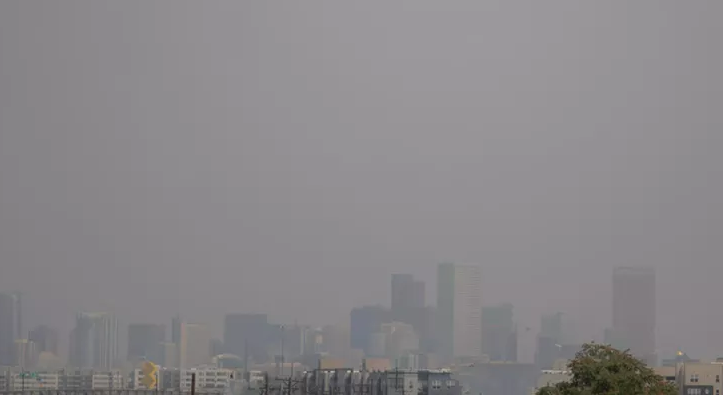
Evan Semón

Audio By Carbonatix
After the Denver Broncos were blown out in Super Bowl XXII in 1988, CBS Evening News reporter Bob McNamara got in one more dig, saying the 42-10 loss to the Washington Redskins (now the Commanders) must be hard to swallow “for a town that’s never been number one in anything but carbon monoxide levels.”
But reports of bad air in Denver didn’t start in the 1980s. They date back to the 1880s, when a newspaper article reported that “bad air was hurting the city’s reputation.” Over the next century, a mixture of industrial pollution, car exhaust, dust and wood burning contributed to the brown cloud that hung over Denver – and its reputation by the 1980s. Mandates requiring cleaner-burning fuel helped flush away that brown cloud in the ’90s, but as Thomas Mitchell notes, the city still struggles with air quality.
In their comments on the Westword Facebook page, readers attempt to clear the air. Says Kurt:
It’s a geographic phenomenon. Like Los Angeles, it sits in a bowl surrounded by mountains on one side and flat open range (sea) on the other side. That creates a perfect condition for an “inversion layer” – nothing gets in or out.
Recalls Rita:
It was very polluted when I was young; it was much better by the ’80s. I read that the Native American name for the Denver area was “The Place of the Yellow Haze.”
Notes Ted:
When the railroad came to town, it became a big city that would require power. How else did they get electricity and heat? That’s correct: they burned things. So with little oxygen due to the high altitude and voila: 1880s Denver.
Comments Charles:
Well, I am an old geezer – not 1880s old, but old – and when I was a kid growing up in the Montclair neighborhood, my grandmother had a brick incinerator in her backyard. Everyone did. And we burned our garbage. Unimaginable today.
Replies JohnPaul:
My great-grandparents had one in their backyard as well, and this was in a home built in 1967 in the Southglenn neighborhood. Grandma told us they never used it, though, as burning trash was outlawed technically back in 1950 in the Denver area.
Offers Christy:
Because they won’t stop building apartment after apartment after apartment…thousands more vehicles on the road every year…it’s a dumpster fire.
Adds Jess:
It’s cuza all them dagum Californians!
Echoes Cory:
Don’t forget about those dang Texans.
Concludes Alexander:
Pretty sure our air is cleaner than ever before.
True, the air is clearer…but according to the American Lung Association, the metro Denver was the sixth-worst in the country for high ozone days last year, with over forty ozone action alert days issued by local officials for Denver in 2024. The ALA’s limit for a passable city is three days.
What do you think of Denver’s air? Post a comment or share your thoughts at editorial@westword.com.